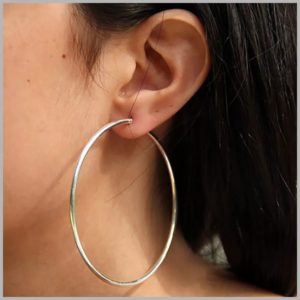 “Earring from the ear - wait for your dear friend!” All girls knew this sign in the past. For them, the loss of an earring promised a pleasant gain: a dear friend. But widows were not allowed to wear earrings; this was perceived as a serious sin. And all married women had to wear earrings so as not to make themselves widowed. This is only a small part of the signs that surrounded one of the most popular women's jewelry.
“Earring from the ear - wait for your dear friend!” All girls knew this sign in the past. For them, the loss of an earring promised a pleasant gain: a dear friend. But widows were not allowed to wear earrings; this was perceived as a serious sin. And all married women had to wear earrings so as not to make themselves widowed. This is only a small part of the signs that surrounded one of the most popular women's jewelry.
Earrings have been known since ancient times; during their existence, their shape has become very diverse. In addition to traditional rings and pendants, cuffs covering the entire ear are increasingly becoming available. And the fashion for piercing not only the lobe, but also all possible parts of the ear has not stopped for the third decade! Everyone is used to the fact that jewelry is called by a man’s name. And why, by the way, was the name Seryozha chosen?
REFERENCE. Until the 18th century In Russia, only representatives of the clergy were called Sergei.
Why are earrings called that?
As you know, the object appears first, then its name.In Rus', earrings appeared as a result of contact with eastern cultures - either during wars with the Khazars, or in the process of trade with them and other Turkic tribes. Women of the East willingly wore rings in their ears, called “sirga” (in Turkic - “ring”).

However, there is another version. The word came into the Old Russian language as a result of assimilation to the Gothic word ausihriggs, from which the Old Russian “useryaz” was formed. And later it gradually turned into an earring!
After that, it was quite easy for the earring to become an earring. In women's speech, all words take on diminutive forms (this is how cups, spoons, bowls appeared...).

Soon the decoration caught on, and not only among women, who willingly decorated themselves with rings in their ears, and then with pendants. Men willingly tingled one ear, putting on the so-called “odinets” - an unpaired earring.
For some time, the fashion for ear piercing stopped in Europe: medieval fashion required closed ears. But since the 16th century, the tradition was resumed, albeit for medical reasons.
REFERENCE. It was believed that a pierced lobe helped improve vision. Therefore, travelers and sailors began to pierce their ears. And in Russia, a sailor’s pierced ear meant that he had crossed the equator at least once.
What is the connection with a man's name?
About the same as between the onion-vegetable and the onion-weapon! That is, none! This is called homonymy in the language, when words that sound and spell the same do not have a common meaning.

Seryozhka (as a name for a boy or guy) in the meaning of a male name, it is derived from the Roman “Sergius” (highly revered). AND has nothing to do with earrings! In both cases, the typical alternation of “Mrs” in the Russian language simply affected.
Agree that this nevertheless does not make the decoration any less attractive!


 0
0





